Numerical Simulation of the Mixing and Salt Washing Effects of a Static Mixer in an Electric Desalination Process
Abstract
:1. Introduction
2. Materials and Methods
2.1. Physical Model and Boundary Conditions
2.2. Computational Method and Assumptions
- (1)
- The acceleration due to gravity is downwards along the z-axis.
- (2)
- (3)
- The surface tensions of the oil and water are set to a fixed value of .
- (4)
- (5)
- The effect of the radiative heat transfer is neglected.
- (6)
- The oil is in a mixed state and acts as a continuous phase. The formation of oil-in-water emulsions is unexpected in this process.
- (7)
- It is assumed that the temperature remained constant during the oil–water mixing process.
- (8)
- According to the model scale, the effect of salt component transport on the heat change is negligible.
- (9)
- The effect of salt transport on the volume change of the two fluids is negligible.
2.3. Grid Irrelevance Test and Model Feasibility Analysis
2.4. Characterization Methods
2.4.1. Mixing Effect
2.4.2. Salt Washing Effect
2.4.3. Differential Pressure
3. Results and Discussion
3.1. Effect of the Static Mixer
3.1.1. Type of Mixer
3.1.2. Number of Mixing Elements in the Mixer
3.2. Effect of Oil Properties
3.2.1. Density
3.2.2. Viscosity
3.3. Effect of the Water Injection Process
3.3.1. Water Injection Volume
3.3.2. Salt Content in Washing Water
3.3.3. Oil–Water Interfacial Tension
3.4. Correlation Analysis of Influencing Factors and Salt Washing Effect and the Salt Washing Efficiency
4. Conclusions
Supplementary Materials
Author Contributions
Funding
Data Availability Statement
Conflicts of Interest
References
- Chen, H. Influences of heavy oil thermal recovery on reservoir properties and countermeasures of Yulou oil bearing sets in Liaohe Basin in China. Arab. J. Geosci. 2019, 12, 363. [Google Scholar] [CrossRef]
- Kang, W.-L.; Zhou, B.-B.; Issakhov, M.; Gabdullin, M. Advances in enhanced oil recovery technologies for low permeability reservoirs. Pet. Sci. 2022, 19, 1622–1640. [Google Scholar] [CrossRef]
- Xu, B.; Wang, Y. Profile control performance and field application of preformed particle gel in low-permeability fractured reservoir. J. Pet. Explor. Prod. Technol. 2020, 11, 477–482. [Google Scholar] [CrossRef]
- Cui, C.; Zhou, Z.; He, Z. Enhance oil recovery in low permeability reservoirs: Optimization and evaluation of ultra-high molecular weight HPAM/phenolic weak gel system. J. Pet. Sci. Eng. 2020, 195, 107908. [Google Scholar] [CrossRef]
- Yuan, G.; Keane, M.A. Catalyst deactivation during the liquid phase hydrodechlorination of 2,4-dichlorophenol over supported Pd: Influence of the support. Catal. Today 2003, 88, 27–36. [Google Scholar] [CrossRef]
- Seadat-Talab, M.; Allahkaram, S.R. Failure analysis of overhead flow cooling systems of a light naphtha separator tower at a petrochemical plant. Eng. Fail. Anal. 2013, 27, 130–140. [Google Scholar] [CrossRef]
- Rikhtehgaran, S.; Wille, L.T. The effect of an electric field on ion separation and water desalination using molecular dynamics simulations. J. Mol. Model 2021, 27, 21. [Google Scholar] [CrossRef] [PubMed]
- Mortazavi, V.; Moosavi, A.; Nouri-Borujerdi, A. Enhancing water desalination in graphene-based membranes via an oscillating electric field. Desalination 2020, 495, 114672. [Google Scholar] [CrossRef]
- Sotelo, C.; Favela-Contreras, A.; Sotelo, D.; Beltrán-Carbajal, F.; Cruz, E. Control Structure Design for Crude Oil Quality Improvement in a Dehydration and Desalting Process. Arab. J. Sci. Eng. 2018, 43, 6579–6594. [Google Scholar] [CrossRef]
- Ye, G.; LÜ, X.; Peng, F.; Han, P.; Shen, X. Pretreatment of Crude Oil by Ultrasonic-electric United Desalting and Dewatering. Chin. J. Chem. Eng. 2008, 16, 564–569. [Google Scholar] [CrossRef]
- Regner, M.; Östergren, K.; Trägårdh, C. Effects of geometry and flow rate on secondary flow and the mixing process in static mixers—A numerical study. Chem. Eng. Sci. 2006, 61, 6133–6141. [Google Scholar] [CrossRef]
- Ghanem, A.; Lemenand, T.; Della Valle, D.; Peerhossaini, H. Static mixers: Mechanisms, applications, and characterization methods—A review. Chem. Eng. Res. Des. 2014, 92, 205–228. [Google Scholar] [CrossRef]
- Hammoudi, M.; Si-Ahmed, E.K.; Legrand, J. Dispersed two-phase flow analysis by pulsed ultrasonic velocimetry in SMX static mixer. Chem. Eng. J. 2012, 191, 463–474. [Google Scholar] [CrossRef]
- Alhajri, N.A.; White, R.J.; Oshinowo, L.M. High Efficiency Static Mixer Technology for Crude Desalting. In Proceedings of the SPE Kingdom of Saudi Arabia Annual Technical Symposium and Exhibition, Dammam, Saudi Arabia, 23–26 April 2018; p. SPE-192388-MS. [Google Scholar]
- Wang, C.; Liu, H.; Yang, X.; Wang, R. Research for a Non-Standard Kenics Static Mixer with an Eccentricity Factor. Processes 2021, 9, 1353. [Google Scholar] [CrossRef]
- Jiang, X.; Xiao, Z.; Jiang, J.; Yang, X.; Wang, R. Effect of element thickness on the pressure drop in the Kenics static mixer. Chem. Eng. J. 2021, 424, 130399. [Google Scholar] [CrossRef]
- Lowry, E.; Yuan, Y.; Krishnamoorthy, G. A new correlation for single-phase pressure loss through SMV static mixers at high Reynolds numbers. Chem. Eng. Process. Process Intensif. 2022, 171, 108716. [Google Scholar] [CrossRef]
- Chakleh, R.; Azizi, F. Performance comparison between novel and commercial static mixers under turbulent conditions. Chem. Eng. Process. Process Intensif. 2023, 193, 109559. [Google Scholar] [CrossRef]
- Moghaddam, S. Effect of Non-Newtonian Fluid on Mixing Quality and Pressure Drop in Several Static Mixers: A Numerical Study. Iran. J. Sci. Technol. Trans. Mech. Eng. 2023, 47, 1585–1597. [Google Scholar] [CrossRef]
- Liu, Y.; Rao, A.; Ma, F.; Li, X.; Wang, J.; Xiao, Q. Investigation on mixing characteristics of hydrogen and natural gas fuel based on SMX static mixer. Chem. Eng. Res. Des. 2023, 197, 738–749. [Google Scholar] [CrossRef]
- Zalc, J.M.; Szalai, E.S.; Muzzio, F.J. Mixing dynamics in the SMX static mixer as a function of injection location and flow ratio. Polym. Eng. Sci. 2004, 43, 875–890. [Google Scholar] [CrossRef]
- Valdes, J.P.; Kahouadji, L.; Liang, F.; Shin, S.; Chergui, J.; Juric, D.; Matar, O.K. On the dispersion dynamics of liquid–liquid surfactant-laden flows in a SMX static mixer. Chem. Eng. J. 2023, 475, 146058. [Google Scholar] [CrossRef]
- Jegatheeswaran, S.; Ein-Mozaffari, F.; Wu, J. Process intensification in a chaotic SMX static mixer to achieve an energy-efficient mixing operation of non-newtonian fluids. Chem. Eng. Process. Process Intensif. 2018, 124, 1–10. [Google Scholar] [CrossRef]
- Singh, M.K.; Anderson, P.D.; Meijer, H.E. Understanding and Optimizing the SMX Static Mixer. Macromol. Rapid Commun. 2009, 30, 362–376. [Google Scholar] [CrossRef] [PubMed]
- Haddadi, M.M.; Hosseini, S.H.; Rashtchian, D.; Ahmadi, G. CFD modeling of immiscible liquids turbulent dispersion in Kenics static mixers: Focusing on droplet behavior. Chin. J. Chem. Eng. 2020, 28, 348–361. [Google Scholar] [CrossRef]
- Qing, C.L. Calculation and Application of Comprehensive Dissolution Rate of Rock Salt. China Well Rock Salt 1994, 113, 13–14. [Google Scholar]
- Bouras, H.; Haroun, Y.; Philippe, R.; Augier, F.; Fongarland, P. CFD modeling of mass transfer in Gas-Liquid-Solid catalytic reactors. Chem. Eng. Sci. 2021, 233, 116378. [Google Scholar] [CrossRef]
- Deising, D.; Marschall, H.; Bothe, D. A unified single-field model framework for Volume-of-Fluid simulations of interfacial species transfer applied to bubbly flows. Chem. Eng. Sci. 2016, 139, 173–195. [Google Scholar] [CrossRef]
- Haroun, Y.; Legendre, D.; Raynal, L. Volume of fluid method for interfacial reactive mass transfer: Application to stable liquid film. Chem. Eng. Sci. 2010, 65, 2896–2909. [Google Scholar] [CrossRef]
- Woo, M.; Tischer, S.; Deutschmann, O.; Wörner, M. A step toward the numerical simulation of catalytic hydrogenation of nitrobenzene in Taylor flow at practical conditions. Chem. Eng. Sci. 2021, 230, 116132. [Google Scholar] [CrossRef]
- Li, H.; Yu, X.; Song, Y.; Li, Q.; Lu, S. Experimental and numerical investigation on optimization of foaming performance of the kenics static mixer in compressed air foam system. Eng. Appl. Comput. Fluid Mech. 2023, 17, 2183260. [Google Scholar] [CrossRef]
- Patel, C.G.; Barad, D.; Swaminathan, J. Desalination using pressure or electric field? A fundamental comparison of RO and electrodialysis. Desalination 2022, 530, 115620. [Google Scholar] [CrossRef]

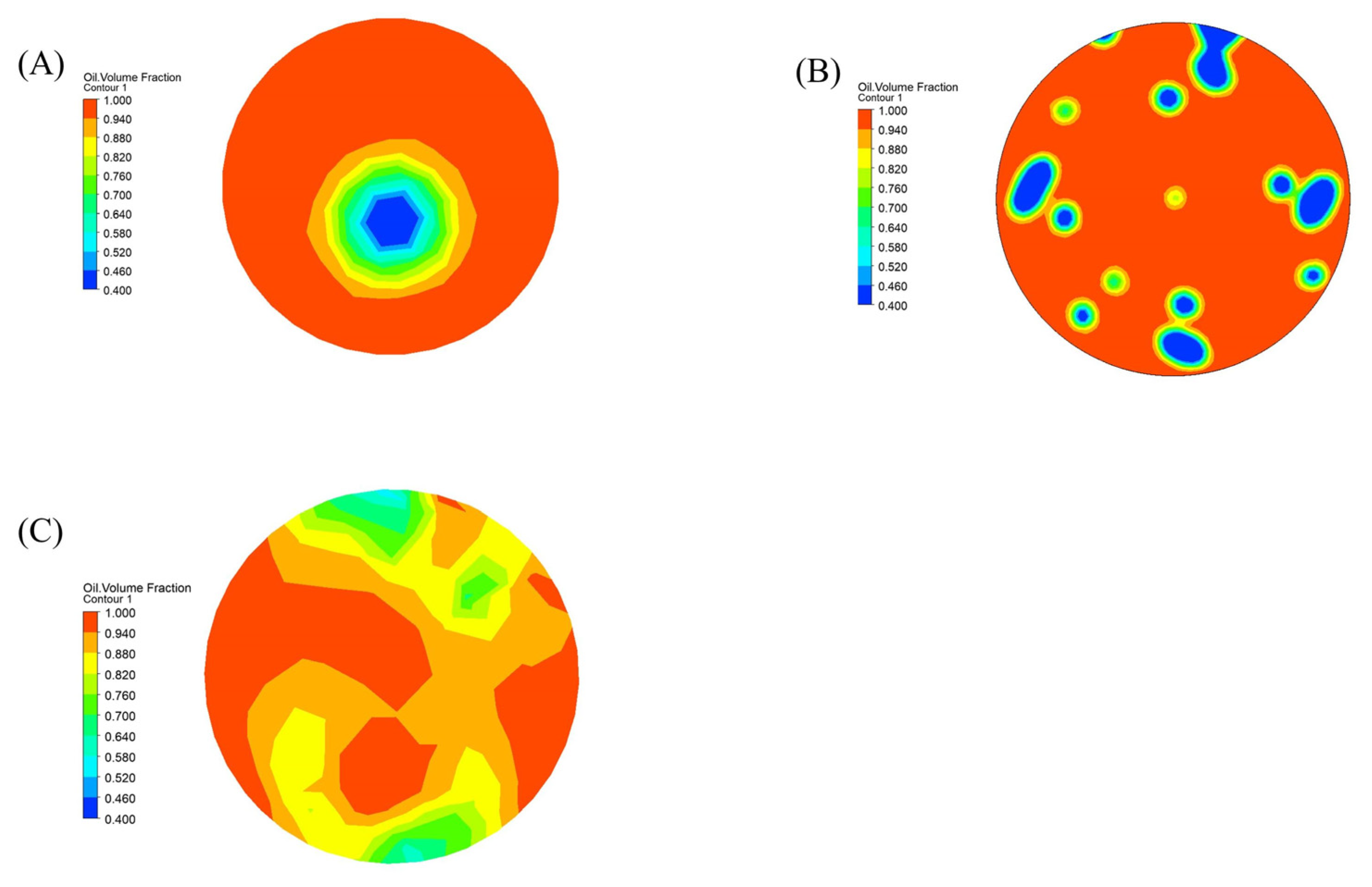
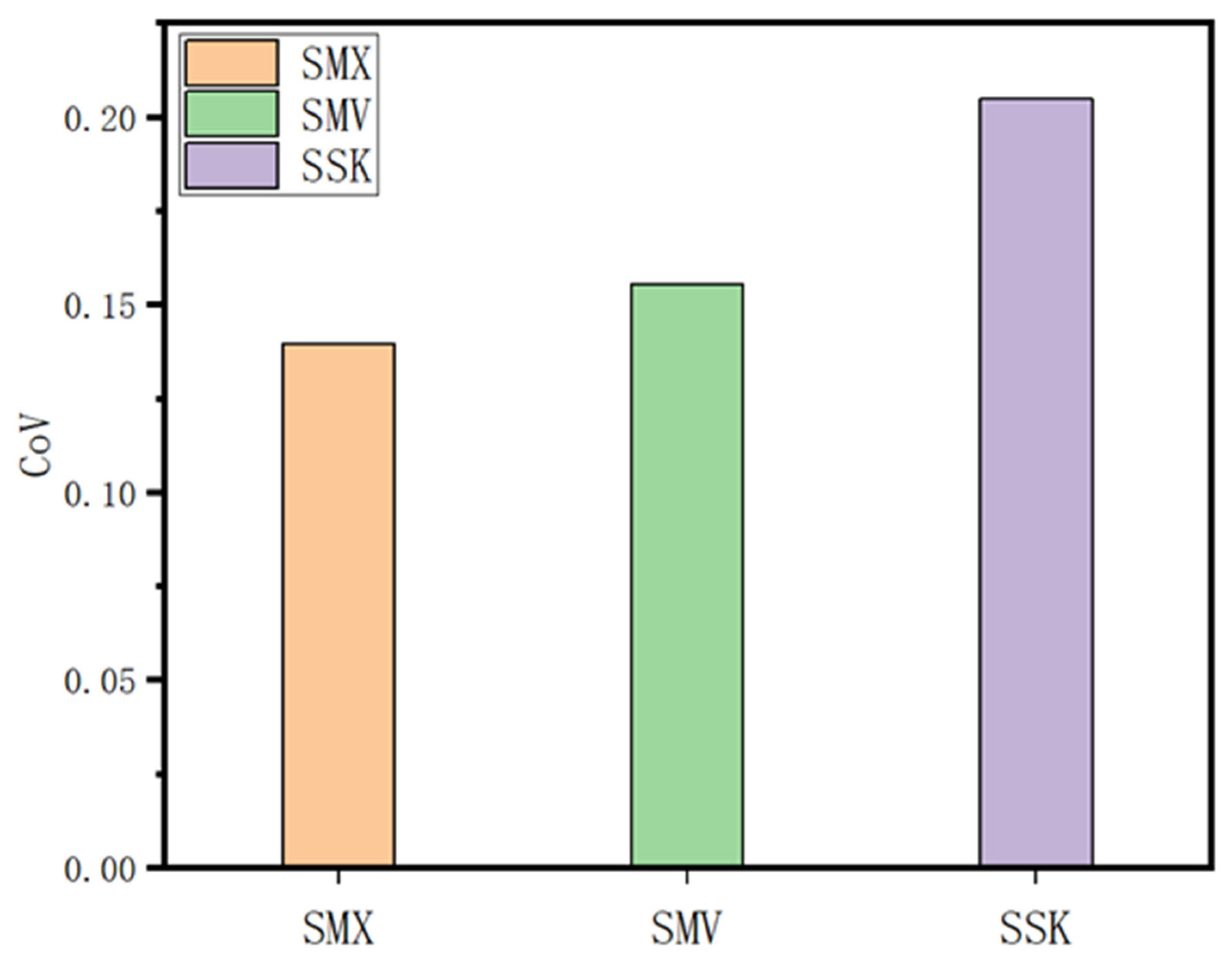

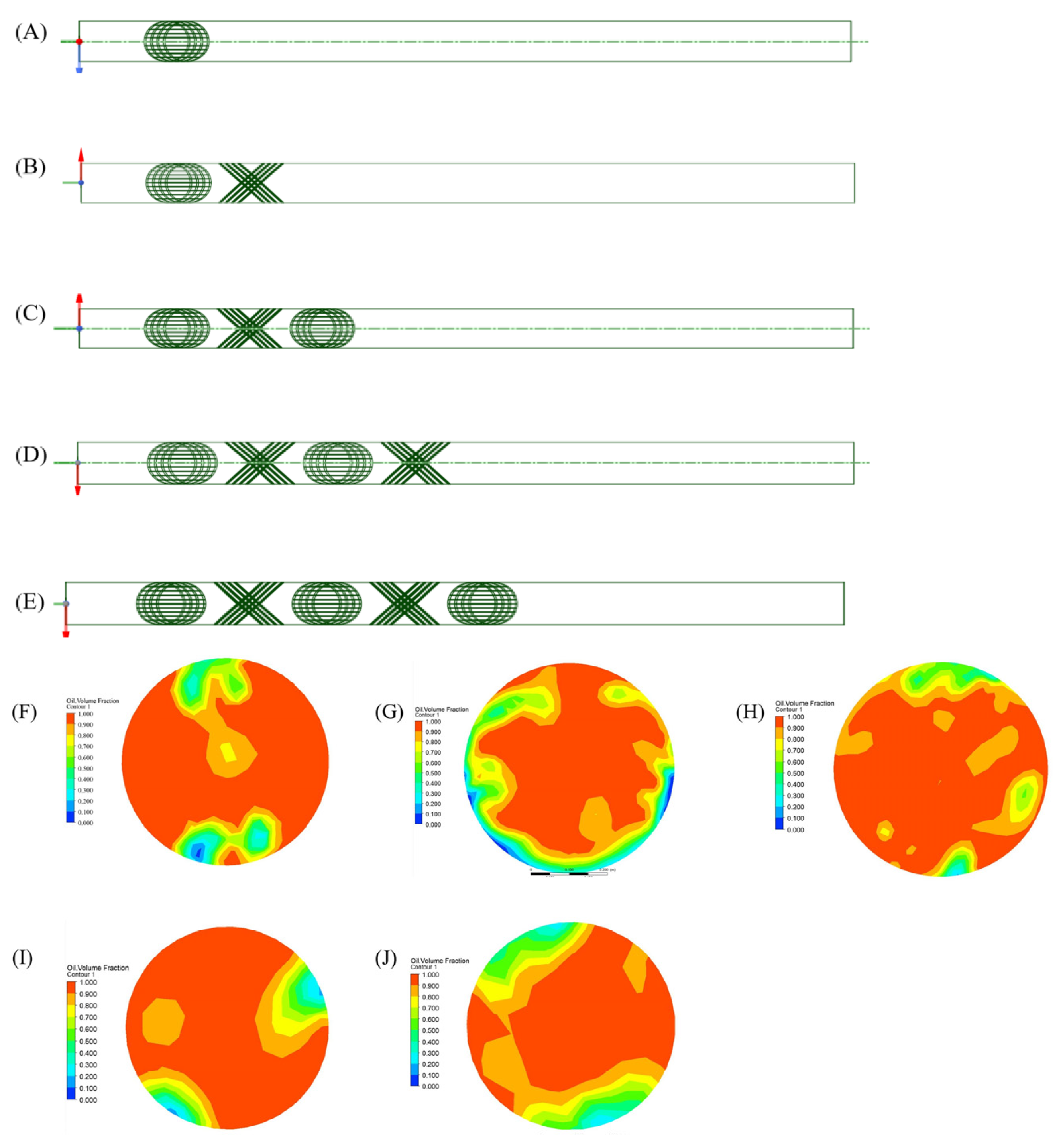
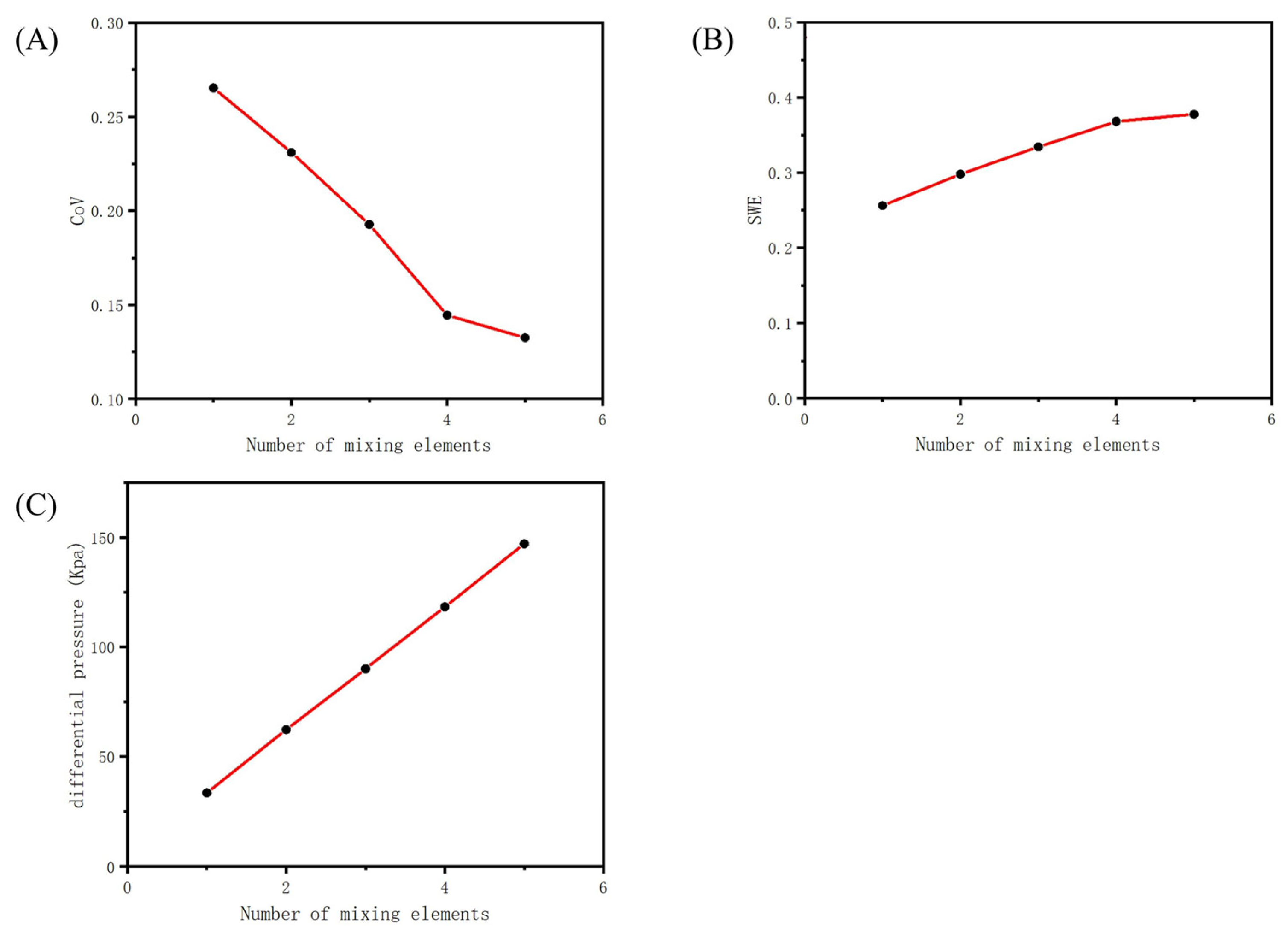
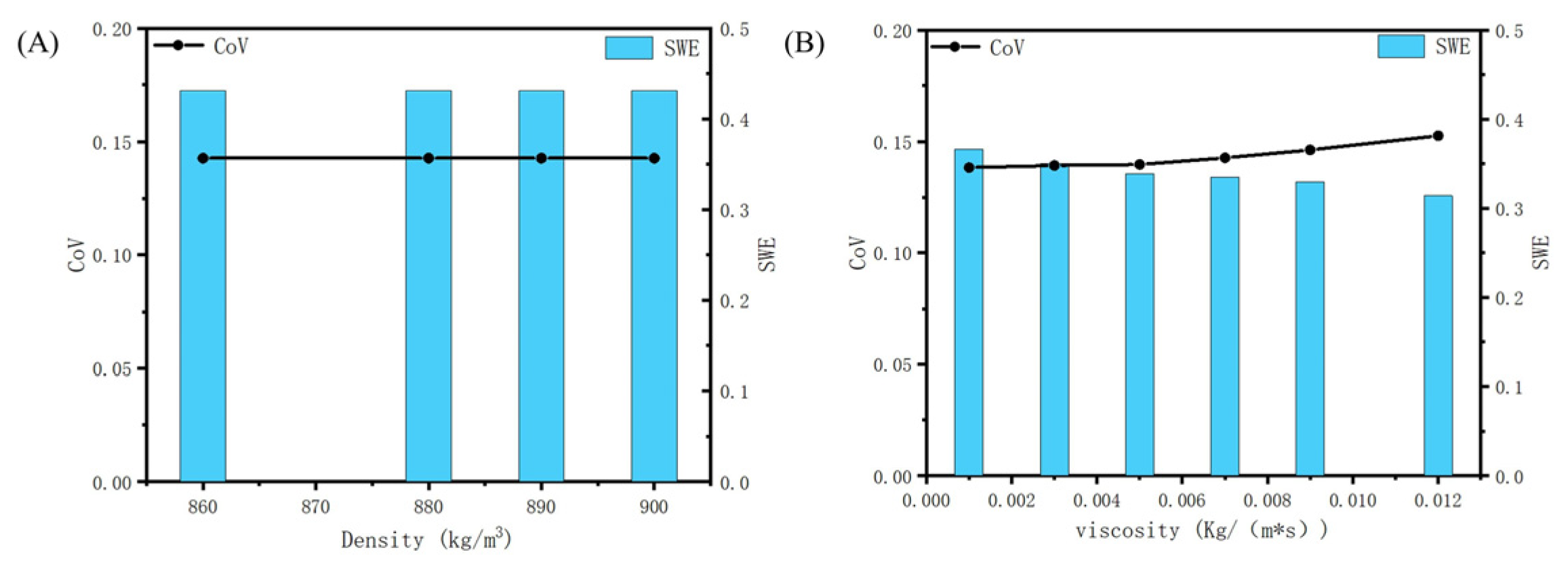

| Researchers | Factor | Conclusion |
|---|---|---|
| Hammoudi et al. [13] | SMX static mixer, Reynolds number | The mixing performance is good at Reynolds numbers greater than 4500. |
| Nasser A. A et al. [14] | The installation method for the static mixer in the electric desalination process | A total saving of more than 8.5 million gallons of wash water was achieved during the nine months of the field trial. |
| Wang et al. [15] | Aspect ratio, the central center position of elements | When the central position of the elements is changed, the blending effect will improve. |
| Jiang et al. [16] | Thickness of mixing element | The thickness of the mixing elements significantly affects the flow field. |
| Lowry et al. [17] | Roughness of mixing element | With the static mixer, roughness had up to a 60% contribution to the overall pressure loss. |
| Chakleh et al. [18] | Types of static mixers | The performance of SMV static mixers is superior to that of SK static mixers and other recently developed static mixers. |
| Moghaddam [19] | Types of static mixers | The SMX static mixer is superior to both the INLINER SERIES 45 static mixer and the KOMAX static mixer. |
| Liu et al. [20] | The number of mixing elements | To balance pressure loss and mixing uniformity, it is recommended to use four mixing units. |
| Zalc, J. M. et al. [21] | Feeding methods, feeding positions, the number of mixing elements | When the level of mixing reaches a certain point, adding more mixing elements does not significantly improve the mixing effect. |
| Valdes et al. [22] | Oil–water interfacial tension | The mixing effect of liquid–liquid two-phase flow through the static mixer is affected by the amount of surfactant used. |
| Jegatheeswaran et al. [23] | Viscosity of the liquid | When mixing liquids of varying viscosities, the energy required to achieve the desired mixing state increases with the viscosity of the liquids. |
| Property | Value |
|---|---|
| Density (393.15 K) | 880 kg/m3 |
| Viscosity (393.15 K) | 0.002 kg/(m·s) |
| Specific heat capacity | 1845 J/(kg·K) |
| Oil–water interfacial tension | 0.01 N/m |
| Grid Size/mm | 15 | 12 | 10 | 5 |
|---|---|---|---|---|
| Number of meshes | 838,452 | 1,386,572 | 2,158,364 | 7,254,231 |
| Pressure drop/kPa | 114.7 | 118.2 | 117.6 | 117.8 |
| Water injection rate (m/s) | 0.75 | 1.25 | 2 | 2.5 | 3 |
| Water–oil ratio (v/v, %) | 3.01 | 5.02 | 8.03 | 10.04 | 12.05 |
| Relevance | SWE | Number of Mixing Elements | Viscosity of Crude Oil | Density of Crude Oil | Volume of Water Injected | Initial Salt Content of the Injected Water | Oil–Water Interfacial Tension |
|---|---|---|---|---|---|---|---|
| SWE | 1 | ||||||
| Number of mixing elements | 0.379 * | 1 | |||||
| Viscosity of crude oil | −0.092 | −0.008 | 1 | ||||
| Density of crude oil | 0.007 | 0.015 | 0.002 | 1 | |||
| Volume of water injected | 0.331 * | −0.018 | −0.044 | −0.044 | 1 | ||
| Initial salt content of the injected water | −0.351 * | 0.093 | 0.013 | −0.023 | −0.293 | 1 | |
| Oil–water interfacial tension | −0.018 | 0.071 | 0.01 | −0.018 | −0.211 | −0.112 | 1 |
| Relevance | CoV | Number of Mixing Elements | Viscosity of Crude Oil | Density of Crude Oil | Volume of Water Injected | Oil–Water Interfacial Tension |
|---|---|---|---|---|---|---|
| CoV | 1 | |||||
| Number of mixing elements | −0.973 ** | 1 | ||||
| Viscosity of crude oil | 0.094 | −0.008 | 1 | |||
| Density of crude oil | −0.02 | 0.015 | 0.002 | 1 | ||
| Volume of water injected | 0.371 * | −0.018 | −0.044 | −0.044 | 1 | |
| Oil–water interfacial tension | −0.079 | 0.071 | 0.01 | −0.018 | −0.211 | 1 |
Disclaimer/Publisher’s Note: The statements, opinions and data contained in all publications are solely those of the individual author(s) and contributor(s) and not of MDPI and/or the editor(s). MDPI and/or the editor(s) disclaim responsibility for any injury to people or property resulting from any ideas, methods, instructions or products referred to in the content. |
© 2024 by the authors. Licensee MDPI, Basel, Switzerland. This article is an open access article distributed under the terms and conditions of the Creative Commons Attribution (CC BY) license (https://creativecommons.org/licenses/by/4.0/).
Share and Cite
Liu, Y.; Gao, M.; Huang, Z.; Wang, H.; Yuan, P.; Xu, X.; Yang, J. Numerical Simulation of the Mixing and Salt Washing Effects of a Static Mixer in an Electric Desalination Process. Processes 2024, 12, 883. https://doi.org/10.3390/pr12050883
Liu Y, Gao M, Huang Z, Wang H, Yuan P, Xu X, Yang J. Numerical Simulation of the Mixing and Salt Washing Effects of a Static Mixer in an Electric Desalination Process. Processes. 2024; 12(5):883. https://doi.org/10.3390/pr12050883
Chicago/Turabian StyleLiu, Yuhang, Mengmeng Gao, Zibin Huang, Hongfu Wang, Peiqing Yuan, Xinru Xu, and Jingyi Yang. 2024. "Numerical Simulation of the Mixing and Salt Washing Effects of a Static Mixer in an Electric Desalination Process" Processes 12, no. 5: 883. https://doi.org/10.3390/pr12050883





